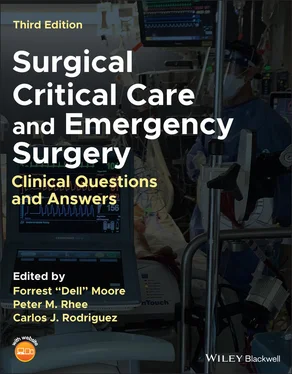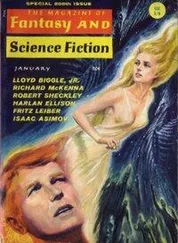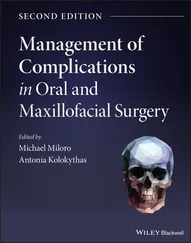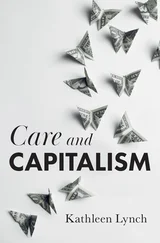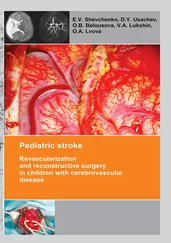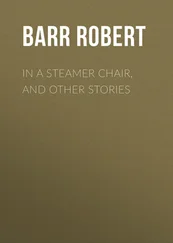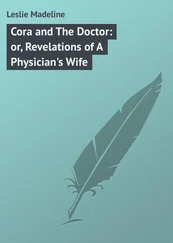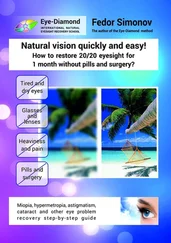Surgical Critical Care and Emergency Surgery
Здесь есть возможность читать онлайн «Surgical Critical Care and Emergency Surgery» — ознакомительный отрывок электронной книги совершенно бесплатно, а после прочтения отрывка купить полную версию. В некоторых случаях можно слушать аудио, скачать через торрент в формате fb2 и присутствует краткое содержание. Жанр: unrecognised, на английском языке. Описание произведения, (предисловие) а так же отзывы посетителей доступны на портале библиотеки ЛибКат.
- Название:Surgical Critical Care and Emergency Surgery
- Автор:
- Жанр:
- Год:неизвестен
- ISBN:нет данных
- Рейтинг книги:3 / 5. Голосов: 1
-
Избранное:Добавить в избранное
- Отзывы:
-
Ваша оценка:
- 60
- 1
- 2
- 3
- 4
- 5
Surgical Critical Care and Emergency Surgery: краткое содержание, описание и аннотация
Предлагаем к чтению аннотацию, описание, краткое содержание или предисловие (зависит от того, что написал сам автор книги «Surgical Critical Care and Emergency Surgery»). Если вы не нашли необходимую информацию о книге — напишите в комментариях, мы постараемся отыскать её.
Surgical Critical Care and Emergency Surgery Surgical Critical Care and Emergency Surgery,
Surgical Critical Care and Emergency Surgery
Surgical Critical Care and Emergency Surgery — читать онлайн ознакомительный отрывок
Ниже представлен текст книги, разбитый по страницам. Система сохранения места последней прочитанной страницы, позволяет с удобством читать онлайн бесплатно книгу «Surgical Critical Care and Emergency Surgery», без необходимости каждый раз заново искать на чём Вы остановились. Поставьте закладку, и сможете в любой момент перейти на страницу, на которой закончили чтение.
Интервал:
Закладка:
10 A 72‐year‐old woman is admitted to the trauma ICU after presentation following high‐speed MVC. A pulmonary artery catheter is placed given the patient’s refractory hypotension. Which of the following is consistent with cardiogenic shock?PCWP (mmHg)CO (L/min)SVR (dyne‐sec/cm5)MVO2 (%)A85120070B43180050C143180050D88120070E86180070Though used infrequently within the surgical ICU setting, the Swan‐Ganz catheter is a useful adjunct in the diagnosis of undifferentiated shock. Normal values obtained, as in option A, show a pulmonary capillary wedge pressure (PCWP) 8–12 mmHg, cardiac output (CO) 5–7 L/min, systemic vascular resistance (SVR) 900–1300dyne‐sec/cm5, and mixed venous oxygen (MVO2) approximately 65%. Option B indicates severe hypovolemic shock with decreased PCWP, decreased CO, increased SVR, and decreased MVO2. Option C indicates cardiogenic shock with increased PCWP, decreased CO, increased SVR, and decreased MVO2. Option D indicates distributive shock with normal PCWP, increased CO, decreased SVR, and increased MVO2. Option E indicates obstructive shock with normal PCWP, normal CO, increased SVR, and increased MVO2.Answer: CCecconi M, De Backer D, Antonelli M, et al. Consensus on circulatory shock and hemodynamic monitoring. Task force of the European Society of Intensive Care Medicine. Intensive Care Med. 2014; 40: 1795–1815.
11 A 73‐year‐old female with past medical history of significant peripheral vascular disease, hypertension, and diabetes is admitted to the ICU with significant hypotension following a myocardial infarction in PACU after undergoing EVAR of a 6 cm AAA. STAT echocardiogram shows right‐sided heart failure. Swan‐Ganz catheter is placed with PCWP of 10 mmHg. What is the next appropriate intervention?Inotrope initiation.Vasopressor initiation.Placement of intra‐aortic balloon pump.Volume resuscitation.Diuretic therapy.The initial treatment of choice following acute right heart failure following MI is fluid resuscitation until PCWP > 15 mmHg is reached. Following this, initiation of inotropes, such as dobutamine, is done. Diuretic therapy may play a role in normotensive individuals. Vasopressors may be used in hypotensive patients with the goal of increasing systemic vascular resistance without increasing pulmonary vascular resistance. Fluid resuscitation should be adequate before continuing to increase vasopressor use. The intra‐aortic balloon pump is used in left heart failure, not right heart failure.Answer: DVentetuolo CE and Klinger JR . Management of acute right ventricular failure in the intensive care unit. Ann Am Thorac Soc. 2014; 11(5): 811–822.
12 An 83‐year‐old woman with past medical history of significant peripheral vascular disease, ESRD on peritoneal dialysis admitted following below knee amputation for acute limb ischemia. You are called to bedside for patient’s mean arterial pressure of 55 mmHg. You note the systolic pressure is appropriate, but diastolic pressure remains low. Which of the following is part of the pathophysiology of diastolic heart failure?Adaptive myocyte remodeling.Volume overload of the ventricle.Cell loss secondary to increased oxygen demand.Impaired ventricular wall relaxation.Change of ventricle from elliptical to globular.Diastolic heart failure stems from incomplete relaxation of the ventricle. Three pathophysiologic pathways include impaired ventricular wall relaxation, as left atrial pressure exceeds left ventricular pressure causing pulmonary edema; increased stiffness of the ventricle secondary to increased wall thickness and decreased internal diameter often seen with poorly controlled hypertension; excess collagen deposition as myofibrils are laid in parallel secondary to ischemia, as seen with MI, impairing contractility. The pathophysiology of systolic failure involves adaptive myocyte remodeling, as occurs with CAD, changing ventricular shape resulting in an increasingly overloaded ventricle with decreasing contractility resulting in cell loss due to increased oxygen demand and eventual change of the ventricle from elliptical to globular.Answer: DZile MR, Baicu CF and Gaasch WH . Diastolic heart failure – abnormalities in active relaxation and passive stiffness of the left ventricle. NEJM. 2004; 350: 1953–1959.
13 You are utilizing central venous pressure monitoring to guide resuscitation of a patient with a 60% TBSA burn injury in your ICU. Which of the following components of the CVP waveform represents isovolumic contraction?c wavex descenta wavey descentv waveCVP Waveform componentMechanical eventa waveAtrial contractionc waveIsovolumic contractionv waveSystolic filling of the atriumx descentAtrial relaxation, systolic collapsey descentEarly diastolic filling, diastolic collapseAnswer: AMagder S . Central venous pressure: a useful but not so simple measurement. Crit Care Med. 2006; 34: 2224–2227.
14 Which component of the cardiac cycle is represented by the answer given above?Early diastoleEarly systoleEnd diastoleMid‐systoleEnd systoleThe a wave occurs from right atrial contraction increasing venous pressure. Right ventricular contraction displaces the tricuspid valve into the right atrium, represented by the c wave. With the emptying of right ventricle, the right atrium relaxes and begins to fill, represented by the x descent. The v wave demonstrates the filled right atrium with increased atrial pressure. Finally, the y descent shows right ventricular filling as the tricuspid valve opens.CVP Waveform componentCardiac cycle eventa waveEnd diastolec waveEarly systolev waveLate systolex descentMid‐systoley descentEarly diastoleAnswer: BMagder S . Central venous pressure: a useful but not so simple measurement. Crit Care Med. 2006; 34: 2224–2227.
15 Which of the following is NOT a physiologic effect of minimally invasive left ventricular assist device?Decreased left ventricular end diastolic pressure.Decreased left ventricular wall tension.Increased diastolic pressure.Increased mean arterial pressure.Increased pulmonary capillary pressure.A minimally invasive left ventricular assist device is a miniature axial pump that allows blood to be aspirated from the left ventricle into the cannula component of the pump and expelled above the aortic valve into the ascending aorta. The device has been used for support in high‐risk percutaneous coronary intervention as well as cardiogenic shock. The device works to unload the left ventricle reducing left ventricular end diastolic pressure and wall tension. This allows for decreased oxygen demand. Furthermore, it increased mean arterial pressure, diastolic pressure, and cardiac output, thereby improving both systemic and coronary blood flow. Finally, it decreases pulmonary capillary pressure and thereby right ventricular afterload.Answer: EBurzotta F, Trani C, Doshi S, et al. Impella ventricular support in clinical practice: collaborative viewpoint from a European expert user group. Int J Cardiol. 2015; 201: 684–691.
16 Which of the following is a physiologic impact of intra‐aortic balloon pumps during systole?Increased systolic blood pressure.Decreased pre‐systolic aortic pressure.Increase in the isometric phase of left ventricular contraction.Increased left ventricular wall tension.Decreased left ventricular ejection fraction.The intra‐aortic balloon pump follows the principle of counterpulsation i.e. inflation during diastole with deflation during systole. The physiologic impacts during the systolic phase include a decrease in aortic systolic pressure as well pre‐systolic (end‐diastolic) aortic pressure both of which contribute to decreased afterload by 10% and 30%, respectively; decrease in the isometric phase of left ventricular contraction, thereby reducing myocardial oxygen consumption; decreased left ventricular wall tension by 20%; increased left ventricular ejection fraction by up to 30%.Answer: BParissis H, Graham V, Lampridis S, et al. IABP: history‐evolution‐pathophysiology‐indications: what we need to know. J Cardiothorac Surg. 2016; 11(1): 122.
Читать дальшеИнтервал:
Закладка:
Похожие книги на «Surgical Critical Care and Emergency Surgery»
Представляем Вашему вниманию похожие книги на «Surgical Critical Care and Emergency Surgery» списком для выбора. Мы отобрали схожую по названию и смыслу литературу в надежде предоставить читателям больше вариантов отыскать новые, интересные, ещё непрочитанные произведения.
Обсуждение, отзывы о книге «Surgical Critical Care and Emergency Surgery» и просто собственные мнения читателей. Оставьте ваши комментарии, напишите, что Вы думаете о произведении, его смысле или главных героях. Укажите что конкретно понравилось, а что нет, и почему Вы так считаете.
